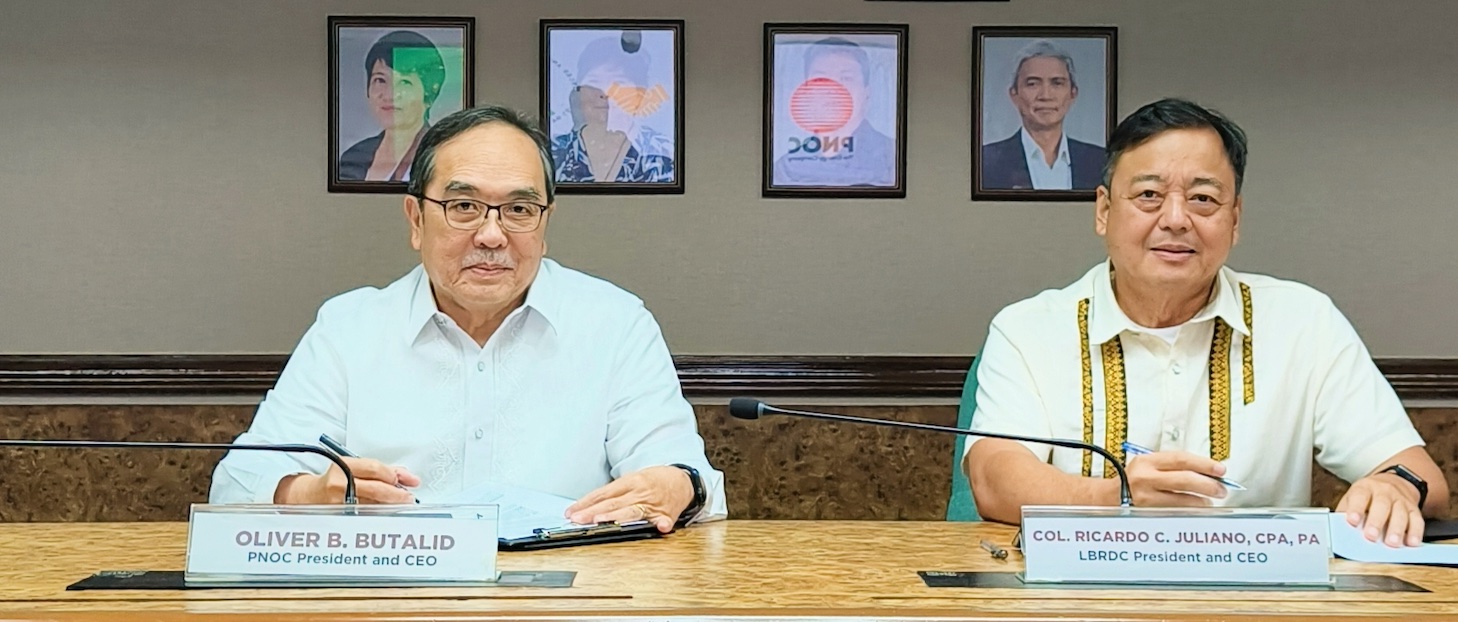At A Glance
- As strain on the country's grid-drawn power supply heightens, the chief of PNOC is solidifying a case on "the importance of an own-use model for rooftop solar systems, highlighting their ability to efficiently meet the energy needs of consumers."<br>
State-run Philippine National Oil Company (PNOC) has cemented a memorandum of understanding (MOU) with LBP Resources and Development Corporation (LBRDC), a subsidiary of Land Bank, for the rollout of solar rooftop installations at the latter’s economic zone domains.
According to PNOC President and CEO Oliver B. Butalid, the initial focus of the two government-owned entities will be the “installation of rooftop solar photovoltaic (PV) systems at LBRDC premises and other potential locators.”
PNOC primarily explained that “this collaborative effort will involve sharing of technical expertise and pooling of resources to develop sustainable solar initiatives.”

Signing of MOU between PNOC and LBP Resources and Development Corp.
The PNOC-LBRDC pact has a provision for three-month study timeline to demarcate the suitable installation sites and structural assessments for the solar arrays.
The first step of their covenant would be the MOU; and that will eventually be transformed into a formal contract or memorandum of agreement.
“Upon completion of the MOA, procurement and installation activities will commence, to replicate successful initiatives in additional government facilities,” PNOC emphasized.
As strain on the country’s grid-drawn power supply heightens, Butalid makes a case on “the importance of an own-use model for rooftop solar systems, highlighting their ability to efficiently meet the energy needs of consumers.”
In addition, LBRDC President and CEO Ricardo C. Juliano noted that for the country to thrive as an investment hub – primarily for power-intensive manufacturing facilities, one of the key requirements of investors would be cheaper electricity rates.
“Lowering the energy costs within the economic zone could have the potential effect of making it more attractive to investors by reducing overall operating expenses,” he stressed.
Via PNOC’s 3-arrow strategy, the paramount target would be to become the solar solutions provider to all government-run entities – from the national government agencies to local government units and even state universities and colleges.
For LBRDC, in particular, Juliano stated that their mandate is into economic zone development and operation, hence, their deal with PNOC will be beneficial in catering to the electricity service needs of their locators – including light manufacturing facilities as well as business process outsourcing (BPO) firms.
“Not only are we getting low cost because we are also the distribution utility person there -- we aggregate the power needs of the whole community,” the LBRDC executive indicated..
In addressing one critical needs of investors, Juliano expounded that “we want to make this country as a choice investment destination for emerging and strategic technologies so it is only a matter of time in a special economic zone where we can attract them.”
At this point, however, what serves as deterrent to capital flow is the Philippines’ stature of having one of the most expensive electricity rates in the Asian region – therefore, that is a sphere that the PNOC-LBRDC partnership will have to squarely address.